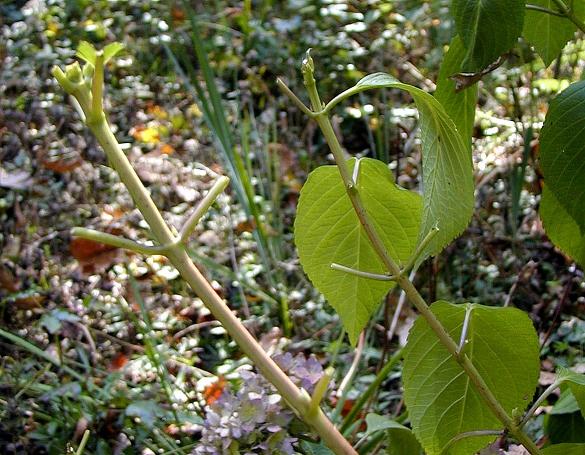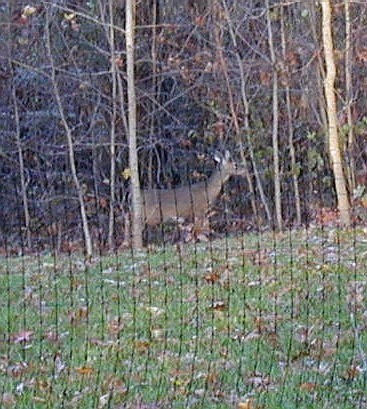
design help?
Check out our
Design Services.

|
Need deer-resistant design help? Check out our Design Services. |

| Maple | Acer spp. (including Japanese) |
| Birch | Betula spp. |
| Ginkgo | Ginkgo biloba |
| American Holly | Ilex opaca |
| Magnolia | Magnolia spp. (older trees) |
| Cherry | Prunus spp. and cultivars |
| Dogwood | Cornus spp. and cultivars |
| Pine | Pinus spp. |
| Oak | Quercus spp. (older trees) |
| Hawthorn | Crataegus spp. |
| Sweetshrub | Calycanthus floridus |
| Fringe Flower | Loropetalum spp. |
| Abelia | Abelia spp. |
| Boxwood | Buxus spp. |
| Buckeye | Aesculus |
| So. Wax Myrtle | Morella cerifera |
| Doghobble | Leucothoe spp. |
| Andromeda | Pieris spp. |
| Sweetspire | Itea virginica |
| Summersweet | Clethra |
| Sage (P/A) | Salvia spp. |
| Lantana (P/A) | Lantana spp. |
| Groundcover Verbena (P/A) | Vergena canadensis |
| Most Herbs (P/A) | varies |
| Bell Flower (P) | Campanula spp. |
| Showy Evening Primrose (P) | Oenothera speciosa |
| Tickseed (P/A) | Coreopsis |
| Daffodils (P) | Narcissus |
| Turtlehead (P) | Chelone spp. |
| Most Ferns (P/A) | varies |
| Hydrangeas | Hydrangea spp. |
| Roses | Rosa spp. |
| Daylilies | Hemerocallis |
| Hostas | Hosta spp. |
| Phlox | Phlox spp. |
| Pansies | Viola spp. |
| Euonymus | Euonymus spp. |
| Indian Hawthorn | Rhaphiolepis spp. |
| Asiatic Lilies | Lilium spp. |
| Hibiscus | Hibiscus spp. |